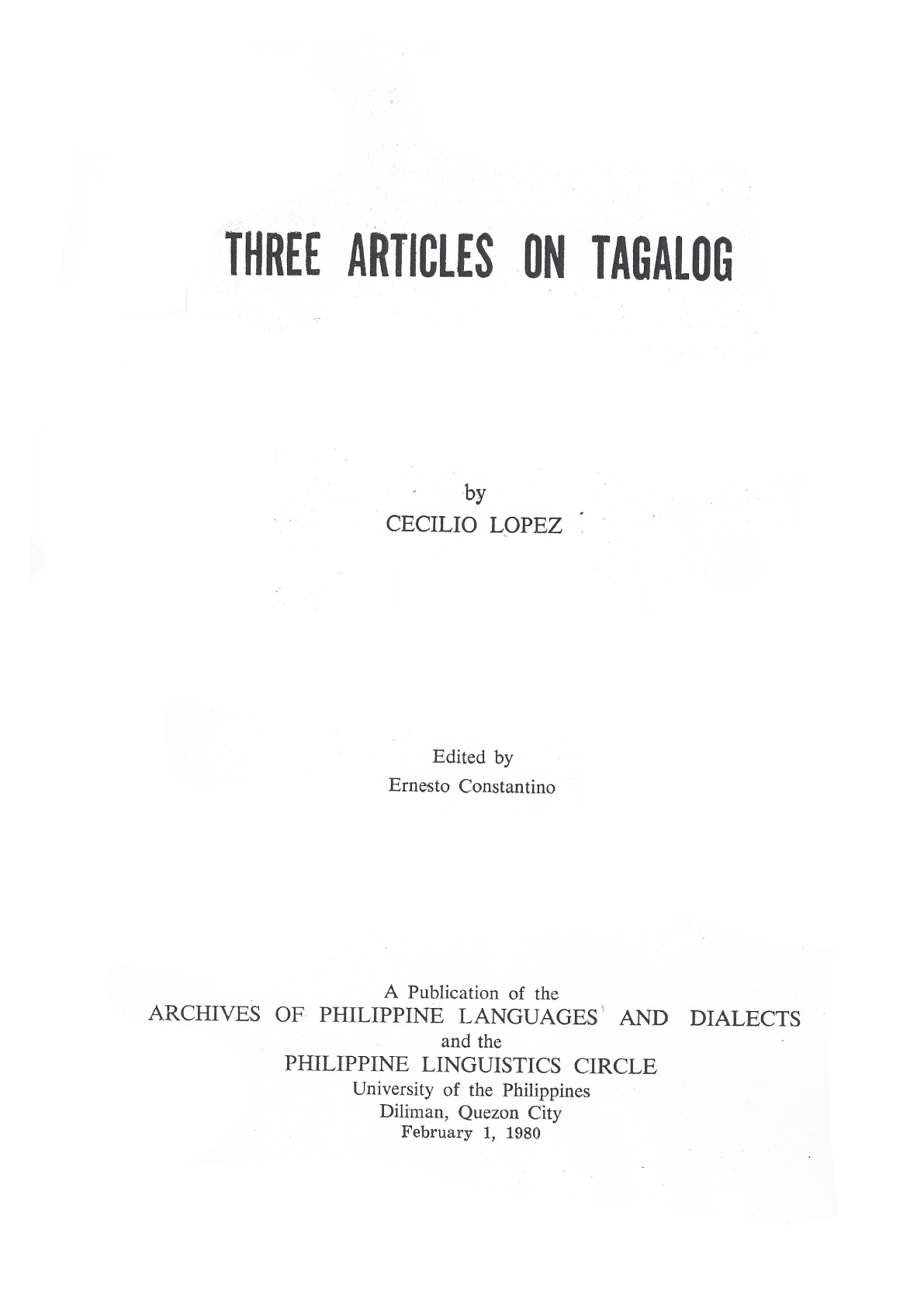Certain Unreported Morphemes in Tagalog
Abstract
There is a rich bibliography on the splitting of proto-phonemes in AN languages. Brandes (1884:148) calls attention to the necessity of the explaining not only derivations of irregular forms but also of doublets (dubbelvormen) which are the result of splitting of phonemes in the course of time, and which became fixed and gave rise to certain alternation in meaning. One doublet cited by Brandes (p. 147) is bogok and bolok, both unglossed, modern Tag. bugok ‘rotten, esp. eggs, bulok ‘rotten in general’. Schwarz (1908:34-5) reports the alternation of g and l in Tnt.: kegti, keli ‘many’, and Dunnebier (1929:391) speaks of the alternant prefixes mojo (j = y) and moro meaning ‘to do reciprocally’ in Bol-Mong. Conant (1910:76) finds a large number of r:g variants in Ilk. vocabulary, and according to Brandes (p. 147) the original letter r:g in Lam, has acquired a fixed character, that is, g is predominant in north Lam.; in the south Lam., r has the upper hand. Dyen (1942: 233-4) gives instances of assumed d:l doublets in Tag. resulting from the splitting of a proto-phoneme, whereas to Dempwolff (1934: 38:34), Tag. d and r “sind gleichwertig, aequivalent”. According to Dahl (1951:60), *૪ splits into j and zero with the latter occurring more frequently than the former in Mnj. than in Mlg.


